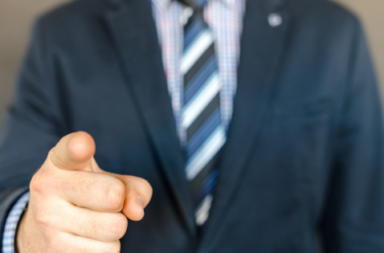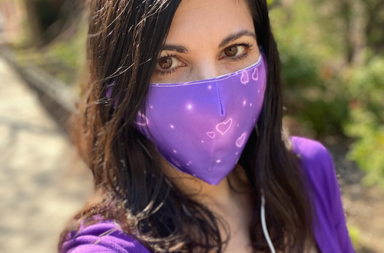How to Enjoy Your Gadgets Without Passing Your Digital Threshold
(Updated December 13, 2023)
Do you wish you were less stressed and anxious? Are you feeling overwhelmed by all of your commitments? There’s a place we all know where tiny changes in behavior can lead to a wonderful sense of personal control and calm. It’s your personal digital world…
In order to benefit from the tips offered in this blog post, it’s important that you first grasp the idea that each of us has a threshold for how much digital stimulation we can take. We’re so used to living our lives in an chronically overstimulated state, but it doesn’t have to be this way.
Believe me, I want you to get the most out of your personal technology. Just a few lifestyle tweaks and you’ll be on your way to reaching a more peaceful relationship with your devices.
Here are 4 tips for avoiding digital overstimulation.
(One bit of important advice…Pay most attention to the suggestions that bring up the strongest resistance or repulsion in you. These reactions often represent signs of denial and/or dependency.)
Tip #1: Know your digital threshold.
It all starts with your “personal digital cliff,” the moment in which any continuation of heavy screen use begins to work against you. You have a secret threshold for how much digital consumption you can take in a day and possibly in one segment of the day, beyond which your mood starts to dip, your focus suffers, you can no longer stop yourself from putting your face in front of the screen, and irritability and anxiety sets in. People often mistake these symptoms as resulting from other factors.
Get to know what falling of this cliff feels like so that you can pull back from your screens, even if for a few minutes, to rediscover your center.
What is your personal threshold for digital stimulation?
It’s the point in which additional screen use shifts you into a more anxious, irritable, overstimulated, exhausted, and depressed state of mind. This negative shift is undoubtedly influenced by other factors, including how much stress you’re already feeling in your non-digital world and the strength of your need to escape the stress.
Yes, digital overload can do this.
Many digital behaviors can trigger this “mental breaking point.” Stimulus overload from heavy multitasking involving several screens in one segment of the day can fry your brain. So can a day’s worth of constant texting, emailing, surfing the web, or other screen viewing. Add in stress from a nonstop schedule or a bodily rebellion from impulsive eating or too much caffeine and….walla!! You’re overstimulated and unraveling.
(If you need help identifying what digital overstimulation means for you, please take a look at my blog post entitled “Who Doesn’t Look at Their Phones to Calm Down?)
Techealthiest Suggestion: Begin to develop an observing self in which you monitor your limits for maintaining a sense of balance (and sanity!) as you interact with your screens. When you start to sense a shift in your mood, work hard on moving away from the screen as a way to soothe and try other non-screen related methods such as gulping down water, talking to a person nearby, writing, taking a short walk, stretching, singing a song that reminds you of good things, or reminding yourself of 10 things you are thankful for. If you’re willing to take one suggestion seriously, this is the one!!!
Tip #2: digital Multitasking is overrated and may be increasing your stress levels more than you may realize.
There are some wonderful articles written in the spirit of deromanticizing our love of multitasking. A recent article in Harvard Business Review offers some helpful insights about multitasking. Let’s just say that multitasking usually gives you the illusion of being productive. Under certain conditions, it can yield positive results and save time, but it’s very challenging to draw the line between productive and healthy multitasking versus unproductive and harmful multitasking.
The use of multiple screens is considered multitasking even if you’re just engaging in seemingly harmless messaging, checking social media, or browsing the web.
I refer to this moving between screens as “digital lifestyle multitasking,” the socially acceptable practice of shifting between screens of varying size, or the repeated checking of your phone in a way that takes you out of the flow of another non-digital activity such as walking or eating meals.
If you choose to multitask, ask yourself these hugely important questions:
a) What is the cost to your mind, body, and happiness of multitasking a particular set of actions?
b) Have you slowed down enough to have awareness of your mental state or how your body reacts to juggling tasks or screens?
c) If you frequently determine that it’s worth it or necessary to multitask, is there a time management issue that needs to be addressed? Are you battling an addiction to the rush rapid transitioning between screens offers? Do you have the ability to put a screen away to pay closer attention to another screen?
The reality of our digital age is that we’ve designed our lives to rely on periods of multitasking to get everything done AND we have very little self-control when it comes to resisting the temptation to check screens for new likes, comments, texts and emails. The bottom line is that digital multitasking may actually make you less productive and it appears to promote anxiety, irritability, stress, and a never-ending cycle of requiring even more digital stimulation than before to maintain a standard level of excitement.
Techealthiest Suggestion: Force yourself to limit the time you multitask. You’ll be just as productive committing to one task at a time AND your mood won’t suffer. For these reasons it’s necessary to develop the ability to shift into another gear in which only one screen is given your full attention and the others are tuned out. Think of it as an essential digital muscle in your world of screens that must be flexed after you’ve passively taken in multiple screens for an extended period of time.
At least once a day, challenge yourself to turn off one device when you’re using another. When you’re busy at work, challenge yourself to text less and avoid checking Facebook more than once in a while.
Don’t switch from screen to screen every time there’s a beeping reminder. Just know that if you let digital beeps control your attention, you will live an anxious life of constantly chasing the ability to live in the here and now.
This reduction in multiple screen stimulation is likely to make life less stressful for you. you need the have strength to make corrections to the If multitasking involves multiple screens, make sure you take short breaks away from all screens every 20 or 30 minutes.
Tip #3: Revisit your expectations for how fast you and your messaging partners are supposed to respond to each other.
Your current expectations of rapid responsiveness are likely to be making you a more anxious person even when you’re not texting.
Response demand is the expectation that you or the recipient of your text or email is supposed to respond as rapidly as possible. Dr. Andrew Weil addresses this phenomenon in his book Spontaneous Happiness. He argues that….
People who pride themselves on maintaining the fastest response time to others are probably the most likely to misinterpret any perceived response delay.
My suggestion: If you tend to judge or snap at people for taking too long to respond, or if you often to assume the worst when you think someone is taking too long to text or email you back, then something needs to change.
Similarly, if someone in your life tends to snap at you for how long it takes for you to get back to them, ask yourself if there was some baseline response time already established that your current delayed response is being compared to. If so, have a conversation with them that establishes healthy guidelines and expectations for response time so you won’t be held to a standard you can’t uphold. If you take forever to respond (i.e., days or weeks,) then this is a totally different conversation meant for another blog post. Also, if your boss demands a fast response time, then obviously this conversation I’m promoting cannot take place. Just know that your physical and mental health suffers more than you think for such digital demands on you.
Reducing response demand is likely to yield the following positive effects:
- An immediate reduction in your baseline anxiety levels.
- An increase in patience and reasonable expectations for yourself and others.
- Greater success with delaying gratification in other tasks unrelated to messaging.
- The ability to pause for a moment and decide if it’s the right time to respond to an incoming message, as opposed to an automatic process of responding irrespective of the price you pay for interrupting a task.
Tip #4: Find other ways to self-soothe that don’t involve screens.
If heavy use of your devices is making you more stressed and anxious, then it makes sense to find other ways to relax beside the use of a screen. This is a big challenge for most people because of the accessibility of our screens and how easy it is to distract ourselves from painful thoughts and feelings by getting lost in the stimulation that our devices offer.
My suggestion: Make sure you have other means of bringing your heart rate down and decompressing, such as deep breathing, taking a brisk walk, stretching, reading a book, or magazine, chatting in person with someone you trust, splashing water on your face, or rigorous exercise.
If you’ve conditioned yourself to calm down primarily by looking at your phone, computer or tablet, then consider that you are creating a dependency on your screens that will gradually reduce your investment in anything that doesn’t involve a screen. A lifestyle of screen-soothing requires you to stay connected to your digital world in order to feel at peace. It’s worth it to learn to self-soothe by using your inner resources.
Your reality, including the thoughts in your head and the range of emotions you experience throughout the day, will automatically get an upgrade when you find balance between calming yourself with and without your screens.




